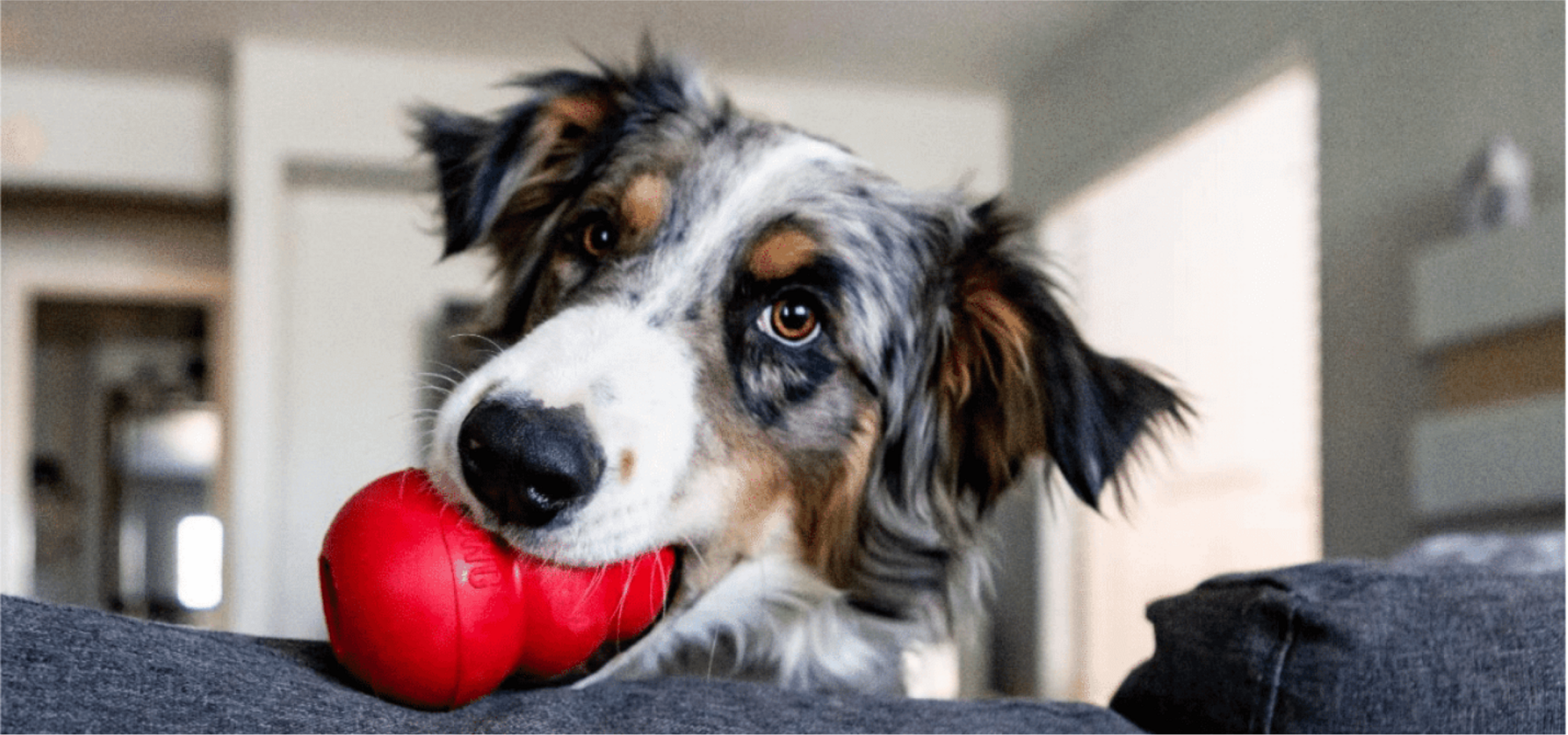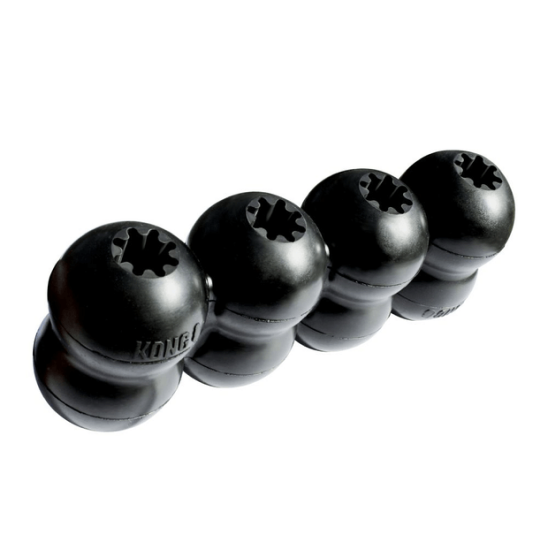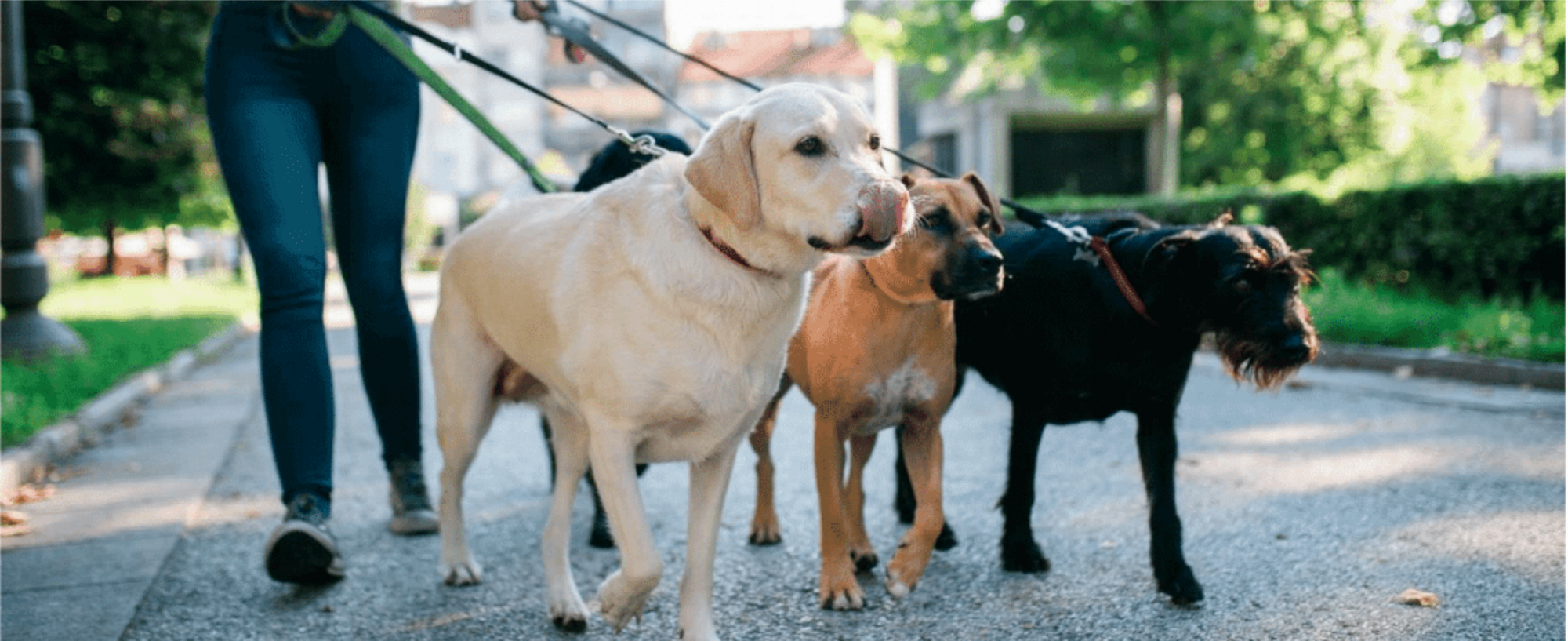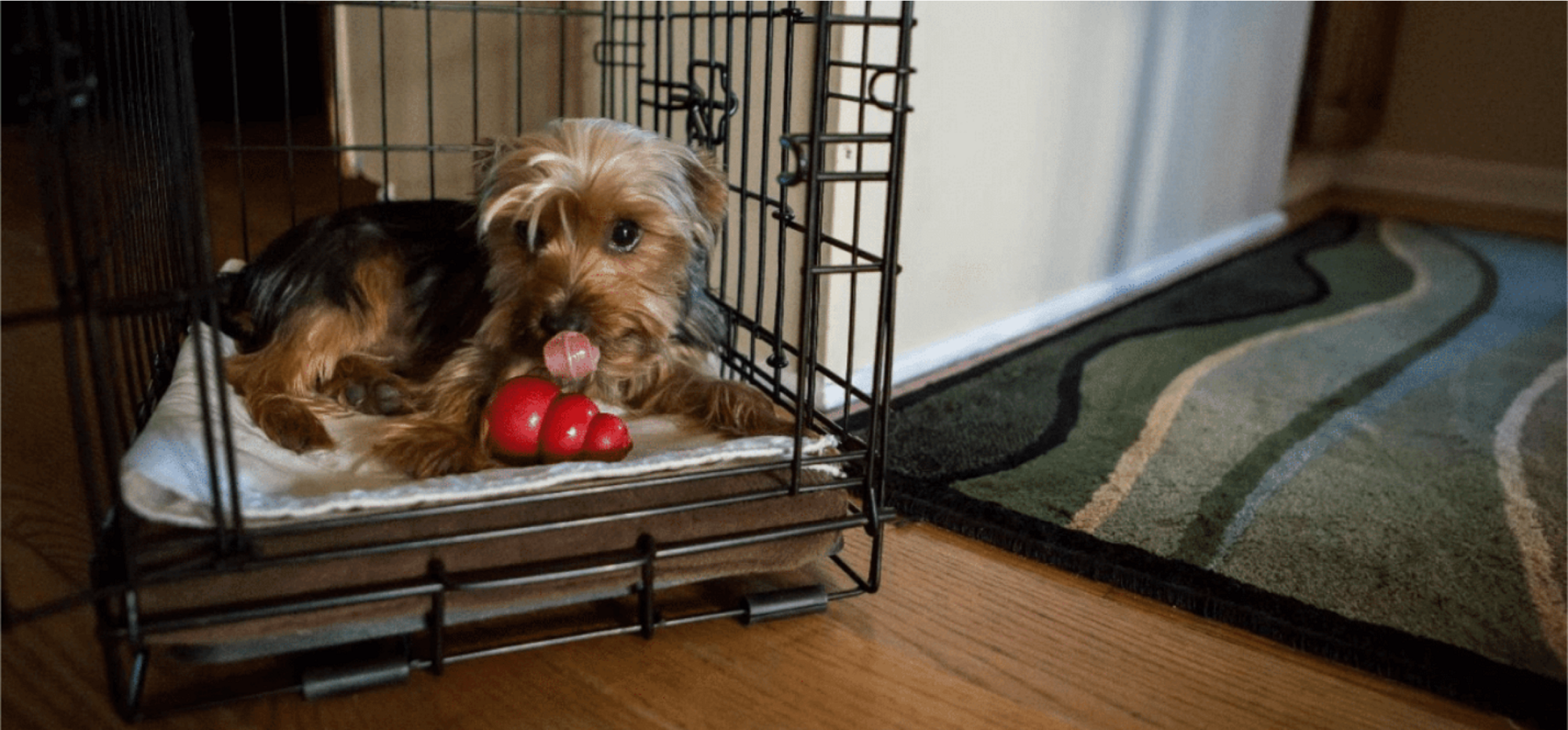Last Updated: 07/05/2025
Managing Seperation Anxiety with KONG
Author: Dr Teagan Lever BVSc (Hons)
Reading Time: 4 minutes - short read
Much like humans, dogs love routine and what is familiar to them. When there is a big change or variation from their schedule it can be unnerving for our four-legged friends. If your pet expresses heightened signs of stress in response to these changes, they may be suffering from a condition known as separation anxiety.
A serious condition and more common than you would think, separation anxiety affects pet dogs of all breeds and sizes. One out of every six dogs may suffer from canine separation anxiety. Dogs with separation anxiety may panic and suffer from stress when left alone.
Thankfully there are plenty of ways to keep your furry friend occupied when they are home alone.
In severe cases, your dog may require veterinary input, anxiety supplements and/or medication. Read our article Separation Anxiety in Dogs and the Best Anxiety Supplements for a more comprehensive guide.
What Are The Signs of Separation Anxiety?

Common Signs of Separation Anxiety include:
- Barking, howling or whining
- Digging, scratching or destruction
- Going to the bathroom in the house
- Pacing
- Escaping or attempting to escape
Why Do Dogs Get Separation Anxiety? There isn't one specific known reason as to why certain dogs develop separation anxiety, there have been some common situations that have been associated with dogs developing separation anxiety. Common causes include a change of family, caretaker, or residence, or a general disruption to the routine.
How to Manage Separation Anxiety

1. Counterconditioning with KONG
If your dog has a milder case of separation anxiety or is a puppy that is starting to show some clues they might have it, try counterconditioning with a KONG toy.
Counterconditioning is the process of changing a dog's negative reaction to a positive one instead. By using a KONG toy stuffed with your dog's favorite high-value food you are able to create a positive association and distraction during what normally would be a stressful situation.
Separation anxiety happens within the first 20 minutes of a dog being left alone. By giving them a time-consuming food puzzle as soon as you're about to leave, it not only distracts them from their peak anxiety, but starts to create a positive association between being alone and a getting a reward like a KONG stuffed with treats or dog-safe paste!
What is the best KONG for Counterconditioning and Separation Anxiety?
What's better than just 1 KONG Classic? 3! This multipack allows your pup to play with one today, freeze another for later, and wash a third for tomorrow!
Perfect for teeny pups, the KONG Puppy is made from the gentlest KONG rubber. It's suitable for those delicate puppy teeth and ideal for providing teething relief.

Featuring extra tough black rubber, the KONG Extreme Goodie Ribbon's four spaces can be stuffed with treats or paste. The Goodie Gripper⢠ridges inside ensure a mentally challenging puzzle!
This fun, wobbly toy sits upright until nudged by a paw or nose, dispensing tasty rewards as it wobbles, spins and rolls. The unpredictable movement stimulates natural instincts, keeping even the most experienced dogs challenged.
2. When You Leave the House...
Don't make a big deal about leaving or returning. Even if your dog is excited to see you when you get home, ignore them until they are calm.
You might also like to leave an item or piece of clothing that smells like their pet parent, and leave the tv or some music on. A lot of pet parents find success with DOGTV and or some reggae music.
It's also ideal to take your dog for a walk before you leave so they are tired and more relaxed for your departure. If you can't manage this, why not hire a dogwalker to help break up the day?
3. Desensitisation

Dogs are quick to pick up on cues. They know when you pick up a bowl that means it's dinnertime, or if you grab a leash they're in for some exercise. This also holds true for cues they dislike, like their people grabbing their keys, coats, and leaving them alone. One way to help is by exposing them to the situations or stimuli at a low level that won't cause the negative reaction.
How to Desensitise your Dog to the 'Leaving Home' Cue:
1. Start by grabbing your keys and putting on a coat and instead of leaving, sitting on the couch.
2. After repeating this process these once negative cues will eventually not be associated with your departure.
3. Next, practice opening and closing the door and sitting back down.
4. Once there is no reaction, progress to short trips away from your dog that are quick enough to not create concern or stress.
5. Keep increasing the amount of time you're away until your dog can handle the longer time apart. Start with minute intervals and work your way up to hour long periods.
This process takes patience and practice to work, so it is important not to rush!
TOP TIP: Just like children, pets can get tired of playing with the same toy everyday. Rotate between different KONG toys each day to keep your dog entertained and interested!
4. Crate Training

For many dogs, a crate can provide a sense of security, which can sometimes help with separation anxiety. It is important to introduce your dog to their crate in a positive, stress-free manner. Learn all about crate training here.